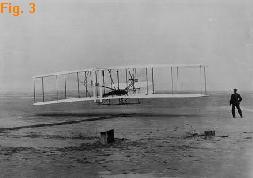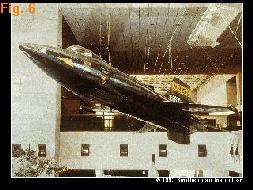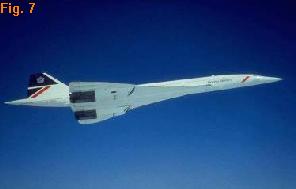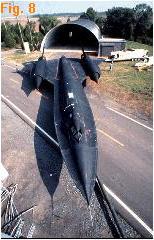 |
|||||
| Home | Research | For Teachers | HISTORY Level 1 Level 2 Level 3 |
PRINCIPLES Level 1 Level 2 Level 3 |
CAREER Level 1 Level 2 Level 3 |
| Gallery | Hot Links | What's New! | |||
| Web Administration and Tools | |||||
 |
|||||
| Home | Research | For Teachers | HISTORY Level 1 Level 2 Level 3 |
PRINCIPLES Level 1 Level 2 Level 3 |
CAREER Level 1 Level 2 Level 3 |
| Gallery | Hot Links | What's New! | |||
| Web Administration and Tools | |||||
Man's passion to fly must have originated in prehistoric times. The beauty and freedom of soaring birds has always drawn our admiration and envy. The freedom to move in any direction over all obstacles is a capability that all of us would enjoy. Early attempts to defy gravity involved the invention of ingenuous machines, such as ornithopters (Figure 1).
This type of flying machine utilizes the flapping of the wings in order
to achieve flight. Needless, is to say that all attempts to fly using this type of machine
failed. The reason for this failure was very simple, since the remarkable physiological
capabilities of birds can never be matched by human beings. In other words our heart beat
rate must have to go up to 800 heart beats per minute in order to be able to achieve
flight.
In the years between 1650 and 1900 there was a second attempt at flying
with a less sophisticated but more efficient generation of flying machines, the
lighter-than-air craft.
The idea of filling a closed container with a substance that normally rises through the atmosphere was as early as the thirteen century. Over a five hundred year span, different substances came to be known as being lighter-than-air. The most common gas proposed was water vapor, helium and hydrogen. The first successful attempts at achieving flight using his type of crafts were made by the Montgolfier brothers in France. Their most successful attempt was in 1783 when in a public demonstration, they achieved 6000 ft in a balloon with a diameter of more than 100 ft. As time went by, it was soon recognized that balloons although able to achieve flight, were basically handicapped by a total lack of directional control. This problem was solved with the introduction of power plants or engines in elongated-like balloons. This elongated shape helped reduce drag in order to decrease the power size. The most successful builder of this type of lighter-than-air craft was Count Ferdinand von Zeppelin,(Figure 2) whose name is synonymous with large rigid dirigibles. The term "dirigible" really means controllable. In the early 1930's the German Graf Zeppelin machine was able to make a Trans-Atlantic flight to the United States. The large Hindenburg was equally successful until it was destroyed by fire while attempting a landing in 1937 in Lakehurst, New Jersey. Nowadays, the blimp has become ubiquitous, appearing over the skies of ballgames and large outdoor events. More can be learned about these flying craft by clicking here.

In the early 1900s two American brothers, Orville and Wilbur Wright (Figure 3),from Dayton, Ohio began to experiment with gliders. The gliders were built using the results of experiments conducted by Otto Lilienthal in Europe. Most of these flights turned out to be a failure. The failure of these flights was blamed on the data provided by Lilienthal. So in 1901, they decided to gather their own wing data by conducting systematic experiments on different types of wing configurations, from which came the 1902 Glider, a machine with a tip-to-tip wing measurement of 32 ft and wing width of 5 ft. This was the first aircraft with three-axis control. This means that the aircraft could go up or down, left or right, and could also roll about its longitudinal axis. Filled with confidence, they went back to the place where they had tested their first glider (Kitty Hawk), in North Carolina, a place carefully selected for its high prevailing winds and soft ground for landings. At Kitty Hawk, they performed over 800 flights, the problem of aircraft control and stability had been conquered.

The Wright brothers, now confident about their ability to flight,
decided to turn their attention to power. Unable to find an engine manufacturer to meet
their specifications of 8 horsepower and engine weight of less than 200 pounds, they
decided to design and build their own engine. Aided by their bicycle mechanic Charlie
Taylor, they were able to build an engine that produced 12 horsepower. With the engine
builder, they then faced the problem of how to build a propeller since very little was
known on the subject. Surprisingly, with their previously collected wing data, they were
able to build accurately the engine propellers. And in 1903, after redesigning the
airframe of their 1902 Glider, the Kitty Hawk Flyer was born. With this aircraft,
in December 17, 1903, Orville and Wilbur Wright demonstrated the flight of self powered
aircraft*. Human beings had finally really flown.
Following the Wright brothers success, a flurry of aeronautical activity took place basically everywhere in the world. In 1909, Europe also saw its share of aeronautical successes in the work of Santos-Dumont and Louis Bleriot, (Figure. 4) whose monoplane achieved the first flight across the English Channel in 1909.
The most impressive advances in the field of aeronautics, were made during the years of World War I and World War II. During World War I the armies of the world saw the introduction of a new machine that would inflict its destruction from above (the bomber). This particular aircraft was the forecoming of today's passenger aircraft. After all, a bomber is like a passenger aircraft that drops its passenger with their luggage in mid air ! The bombers of World War I were very rudimentary. They would carry only a few bombs and they were mostly hand-droped by the pilot. On the other hand, the bombers of World War II carried hundreds of bombs inside their massive fuselage.
As time went by, the velocity of airplanes began to increase. From the famous 12 mph top-velocity of the Wright Brothers Kitty Hawk Flyer to the 400+ mph of the famous navy fighter P-51 Mustang (Figure 5).
Even though the velocity of new coming aircrafts was increasing, very soon it was realized that an invisible "barrier" was preventing aircrafts from surpassing the speed of sound. This barrier was known as the famous "sound barrier". This barrier became the second biggest obstacle since man's first attempt at flying. The barrier took the life of several test pilots as they attempted to break the "sound barrier" in the famous experimental aircraft, such as Bell X-1. Until in 1947, a young test pilot named Chuck Yeager exceeded the speed of sound. From that point on a series of experimental supersonic aircraft took to the sky breaking speed record after speed record. Until in 1962, the North American X-15 (Figure 6) rocket-powered experimental airplane achieved 6.7 times the speed of sound (Mach 6.7) at an altitude of 108 km.

Today we still can see some of the supersonic aircrafts that were built
in the 1960's ,some of them are - The British Concorde (Figure 7) (cruise speed:
Mach 2.0), the Russian TU-144, (cruise speed: Mach 2.2), and the famous American
spy plane SR-71 Blackbird (Figure 8)(cruise speed: classified but known to be over
Mach 3.0).

For more sites on History of Aviation, please check our link page under "History of Aviation related links".
*George Whitehead (Gustave Weiskopf) is considered by some as being the first to fly, accomplishing this task two years before the Wright Brothers. In the October 1998 issue of "Flight Journal" magazine, there is an article about the controversy over the issue of who was the first to fly (pp. 48-55).
Send all comments to ![]() aeromaster@eng.fiu.edu
aeromaster@eng.fiu.edu
© 1995-98 ALLSTAR Network. All rights reserved worldwide.
Updated: February 26, 1999